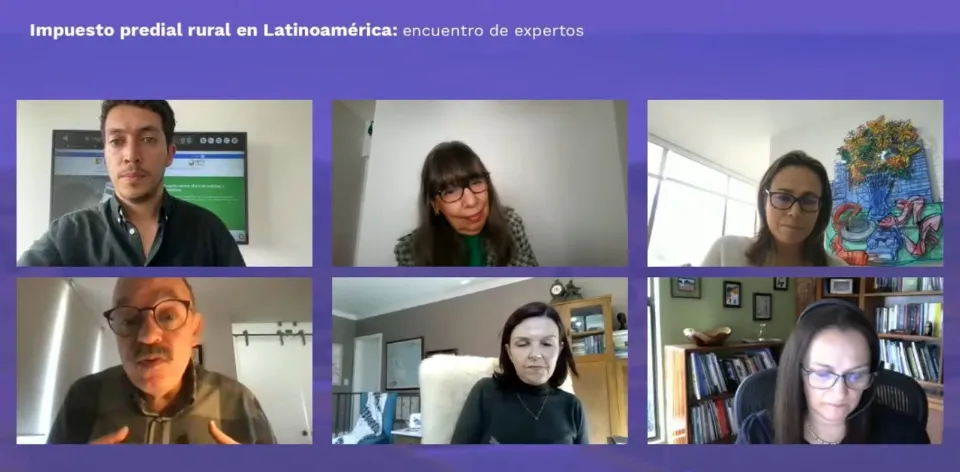 4/6/2024
4/6/2024
UPRA and the Lincoln Institute of Land Policy Highlighted Proposals Around the Unified Rural Property Tax in Latin American Countries

In Colombia, the cadastral records for over 90% of municipalities are outdated.
The unified property tax is the second most significant tax for municipal revenue, accounting for 29%, surpassed only by the industry and commerce tax (ICA) at 40%.
Bogotá D. C., (@UPRAColombia, @claudialili76). In the webinar "Property Tax in Latin America: Meeting of Experts," organized by UPRA and the Lincoln Institute of Land Policy, eight panelists from different countries—Colombia, Brazil, Peru, Argentina, Ecuador, Costa Rica, and Mexico—shared their insights and experiences on the rural property tax.
The event was opened by Claudia Cortés, Director of UPRA, who called for a national update of the cadastre. "Currently, the state of cadastral updating indicates that in more than 90% of municipalities, the cadastre is outdated. Thus, we are looking at an outdated reality," she stated.
Luis Fernando Sandoval, a specialized professional at UPRA, pointed out that "municipal tax instruments have very high rates because the appraisals are very low; but they only have criteria, basically, of areas and strata sizes, without considering the realities of the rural sector. Other highlighted figures in this report: more than 70% of properties are valued below 135 current legal minimum wages, and the sizes of properties, in general, in rural areas of Colombia, vary between 0 and 3 hectares."
From Brazil, Claudia De Cesare highlighted some conclusions about the unified property tax in her country: "The management and administration of ITR (Imposto sobre a Propriedade Territorial Rural) is an important case for the federal government in Brazil. For the federal government, having a tax with the low potential of ITR is more of a problem than a solution."
De Cesare added that "the federal government has very strong, very important taxes, such as the income tax, and obviously, managing the ITR is not beneficial. There are multiple cadastral records for rural properties at the national level, and there is no connection between these records; they show differences of up to two million properties."
From Peru, Saúl Barrera explained how the tax is managed through a 30-year-old law. "Currently, the property tax in Peru is regulated by a municipal taxation law approved by an executive decree since 1993. This law recently celebrated 30 years of validity in the country and uniformly regulates the property tax nationwide. This law establishes the provisions and guidelines on how the property tax should be applied, calculated, collected, and administered by local governments, specifically district municipalities," Barrera highlighted.
From Ecuador, Vanessa Rodríguez presented data on the context of the rural property tax: "The rural property tax in Ecuador is exclusively funded by municipalities; it covers the entire rural population, which in Ecuador is 36% of the population (about 17 million people); there are approximately 8 million properties in the country, with an equal distribution between rural and urban properties."
In the case of Costa Rica, Marcela Román highlighted the challenges and obstacles of this tax: "One of the main differences in the structure or design of this property tax in Costa Rica is that we have a very low rate, 2.5 per thousand, and it is uniform for all land uses, throughout the entire territory; it doesn’t matter if it is commercial, industrial, or residential; it doesn’t matter if it is in urban, coastal, rural, or agricultural areas," Román stated.
In conclusion, some participants mentioned that in each country, the administrative management of the property tax should be improved, rural land should be protected, the efficient use of land should be promoted, and the unproductive concentration of rural land should be avoided.

